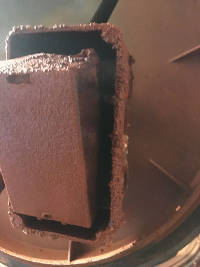Iron bacteria are microorganism that use iron as a source of energy. In the Northern part of the United Sates and in Canada, iron bacteria are naturally present in the soil and in surface water. This surface water reachs sooner or later to the well water. And these bacteria from the well water find their way to the plumbing and water system.
Although iron bacteria are not harmful, they can cause troublesome, persistent, and expensive well and related plumbing problems, including:
- Unpleasant taste and odors resembling sewage, or rotten vegetation
- Slime buildup inside the toilet tank, on filters, or the inside of the well casing
- Reduce well efficiency
- Excessive corrosion of well and plumbing components

The byproduct of iron oxidation by iron bacteria generates a reddish-brown slime or biofilm (biofouling). If left unattended, the bacterium can clog pump intakes, well screens, filters, and water pipes.
There are two commonly used techniques to remove or reduce iron bacteria; heat treatment and chemical treatment.
In the heat treatment technique, steam or hot water is injected into the well. The water temperature is maintained at 60°C or above for 30 minutes. Chemical treatment is commonly known as chlorine disinfection. Chlorine solution is put in the well water, to kill iron bacteria and other organism. Such treatments have the added benefit of eliminating or reducing pathogenic microorganisms, like coliform bacteria, that may also be present in the well. Both these treatments may only be partially/temporarily successful and need to be repeated.
Control Iron Bacteria using Merus Ring
We get regular inquiries by individuals and enterprises, whether the water treatment by Merus rings have any impact on controlling iron bacteria. And its associated problems like slimy organism build-up, tuberculation, corrosion, and the odor. The water treatment of Merus the Bio Rings reduce all kind of microorganism in water, without the use of chlorine. Bacteria are not direct reduced, but mainly the slimy biofilm. If there is less or no biofilm in a water system, there are automatically far less bacteria.
In Aug 2019, one of our customers, a farmer in Alberta, with sever corrosion in his water storage tanks on his farm volunteered. He like to try the Merus ring and provide us with feedback. He like to try the Merus ring and provide us with feedback. We conducted a survey to find out what size of Merus ring would be needed and what is the water consumption. Based on this information, we installed a 1” BIO industrial ring on Aug 10th, 2019. The ring was installed on the pipe between the well and the storage tank. This ring reduces limescale, corrosion, and biofilm and handles up to 4 m3/hr of water consumption.
Based on our previous experience of Merus ring installations in similar applications, a plan was put together for sampling and testing the well water. We wanted to know what the chemistry of water is before entering the ring and what happens once the water flows into the storage tank. A sample was taken from the wellhead before the ring and one after the ring from the downstream of the storage tank on Aug 20th. Another sample was taken from the downstream of the storage tank on Oct 1st and the following table was populated.

Observations
10 days after the installation of the 1” Bio ring, first samples were taken and significant changes between the water entering the tank and exiting the tank were noticed. The ring started to dissolve and disintegrate the corrosion inside the tank that can be witnessed by the rapid increase of iron content from <0.01 to 0.83 mg/l. The other evidence is a change in the color and turbidity of water exiting the storage tank. The color from <5 was increased to >60 and the Turbidity was increased from 0.2 NTU to 35.4 NTU. The following chart provides a better understanding of the Turbidity values.
We took another sample from the downstream of the storage tank in early Oct. The new test shows the values for iron content, turbidity, and color has significantly reduced. This is very clear that the Merus ring has been cleaning the tank from the corrosion caused by Iron bacteria.
Looking at the water chemistry results shows that the Merus ring has also been descaling the tank from limescale build-up and the increase in Calcium and Magnesium followed by a noticeable reduction
Based on the feedback we’ve received from our customer, they have noticed the rust and corrosion inside the storage tank is reduced, the water filter is still clean after being in service for 2 months and no slime is available inside the filter and the toilet tanks in the house. They have even noticed the water feels softer and does not leave deposits on the dishes in the house.
